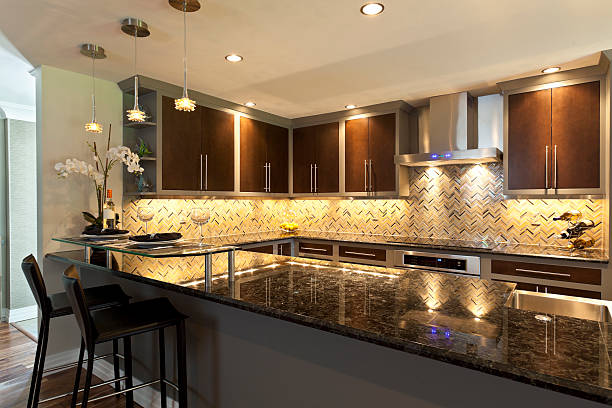Your Blueprint for Smart Home Construction Budgeting
Building your dream home is an exciting and rewarding endeavor, but it comes with a multitude of decisions and considerations, with one of the most significant being the cost. Accurately estimating the cost to build your house is essential for staying within budget and realizing your vision without financial surprises along the way. This is where the “Cost to Build a House Calculator” becomes an invaluable tool in your home construction journey.
In this comprehensive guide, we will explore the intricacies of the Cost to Build a House Calculator, how it works, its advantages, and how to use it effectively. By the end of this article, you’ll have a deep understanding of how to leverage this tool to plan and budget for your dream home with confidence.
Understanding the Cost to Build a House Calculator
Before we delve into the specifics, let’s define what a Cost to Build a House Calculator is. In essence, it’s an online tool designed to provide you with a precise estimate of the total cost required to construct your dream home. This estimate takes into account various factors such as location, size, materials, design, labor, and more. In essence, it serves as your initial budgeting compass, helping you chart the financial course of your home construction project.
The Advantages of Using a Cost to Build a House Calculator
The benefits of utilizing a Cost to Build a House Calculator are manifold and indispensable for anyone embarking on a home construction project. Here are some key advantages:
1. Precision and Accuracy
Building a house involves numerous costs, ranging from major expenses like construction materials and labor to minor ones like fixtures and finishes. A calculator eliminates the guesswork by providing a comprehensive breakdown of expenses, ensuring you have a realistic budget.
2. Effective Budget Planning
With an accurate estimate in hand, you can plan your budget more effectively. This prevents unexpected financial surprises during the construction process, allowing you to stay on track financially.
3. Informed Decision-Making
Armed with a detailed cost breakdown, you can make informed decisions about various aspects of your dream home, such as design choices, materials, and construction methods. This ensures you get the best value for your investment.
4. Customization to Your Needs
Cost calculators can be customized to your specific needs and preferences. Whether you’re aiming for an eco-friendly home, a minimalist design, or a luxurious mansion, the calculator can adapt to your vision.
5. Time-Saving
Calculating the cost of building a house manually can be incredibly time-consuming and prone to errors. A calculator streamlines the process, saving you valuable time and energy.
Now that we understand the advantages, let’s explore how a Cost to Build a House Calculator works and how to use it effectively.
How Does a Cost to Build a House Calculator Work?
A Cost to Build a House Calculator operates based on a set of parameters and variables that you input. Here’s a step-by-step breakdown of how it typically works:
1. Data Input
You begin by entering basic information about your prospective home construction project. This may include:
Location: The calculator considers your location, as construction costs can vary significantly from one region to another due to factors like labor costs, building codes, and material availability.
Square Footage: The size of your home significantly impacts the cost. The calculator will ask you to specify the total square footage you’re planning for.
Style: You can select the architectural style you prefer, as different styles may involve varying costs.
2. Customization
The calculator allows you to fine-tune your estimate by specifying various details, such as:
Number of Floors: Indicating the number of floors in your home affects the overall cost. A multi-story home will generally cost more to build than a single-story one.
Quality of Materials: You can choose the quality of materials you want to use, ranging from basic to premium options. This choice has a significant impact on the total cost.
Level of Finishes: You can specify the level of finishes you desire for different parts of your home, such as the kitchen, bathroom, and flooring.
Additional Features: If you plan to include extra features like a garage, a swimming pool, or a smart home system, the calculator can account for these costs.
3. Geographical Factors
As mentioned earlier, your location plays a pivotal role in construction costs. The calculator takes this into consideration, adjusting estimates based on your specified location.
4. Material Costs
Material costs are a major component of any construction project. The calculator factors in the cost of materials based on your preferences. For instance, if you choose hardwood floors or granite countertops, the calculator will adjust the estimate accordingly.
5. Labor Costs
Labor costs are another significant portion of construction expenses. The calculator takes into account local labor rates and the complexity of your project to estimate labor costs accurately.
6. Architectural Design
If you have architectural plans for your dream home, you can input these into the calculator. This allows for a more precise estimate, as the calculator considers the specific design elements of your project.
7. Additional Features
If you plan to include extra features like a swimming pool, a landscaped garden, or a solar panel system, you can include these in the calculator to account for their costs.
8. Contingency Budget
It’s wise to allocate a contingency budget for unforeseen expenses. The calculator typically provides an option to set a percentage of the total cost for contingencies.
Using the Calculator Effectively
To make the most of a Cost to Build a House Calculator, follow these steps:
1. Gather Information
Before using the calculator, gather as much information as possible about your dream home project. This may include architectural plans, design preferences, and any unique features you desire.
2. Be Realistic
While it’s natural to aim for the highest level of luxury, be realistic about your budget. The calculator will help you find the right balance between your dreams and your financial capacity.
3. Utilize Additional Tools
In addition to a Cost to Build a House Calculator, consider using other specialized calculators that may help you estimate specific costs within your project. For example, a Tile Calculator can assist you in calculating the number of tiles required for your flooring and walls.
4. Compare Estimates
Don’t settle for the first estimate you receive. Use multiple calculators and consult with contractors to get a range of cost estimates. This will help you make well-informed decisions.
5. Plan for Contingencies
Always include a contingency budget in your calculations. This safety net ensures you’re financially prepared for unexpected challenges or changes during construction.
6. Seek Professional Advice
Consider consulting with architects, builders, and real estate professionals. Their expertise can provide valuable insights and help you refine your budget. They can also offer guidance on how to optimize your project based on your priorities.
7. Regularly Update
As your project progresses, revisit the calculator to update your cost estimates. Changes in design or materials can impact the final cost.
Conclusion
Building your dream home is a monumental undertaking, and financial planning is a crucial aspect of this journey. A Cost to Build a House Calculator is your invaluable ally in this endeavor, providing accuracy, customization, and a solid foundation for your budget. By using this tool effectively and seeking professional advice, you can turn your dream into a reality without sacrificing financial stability. So, start your journey toward your dream home today, armed with knowledge and a well-planned budget.





